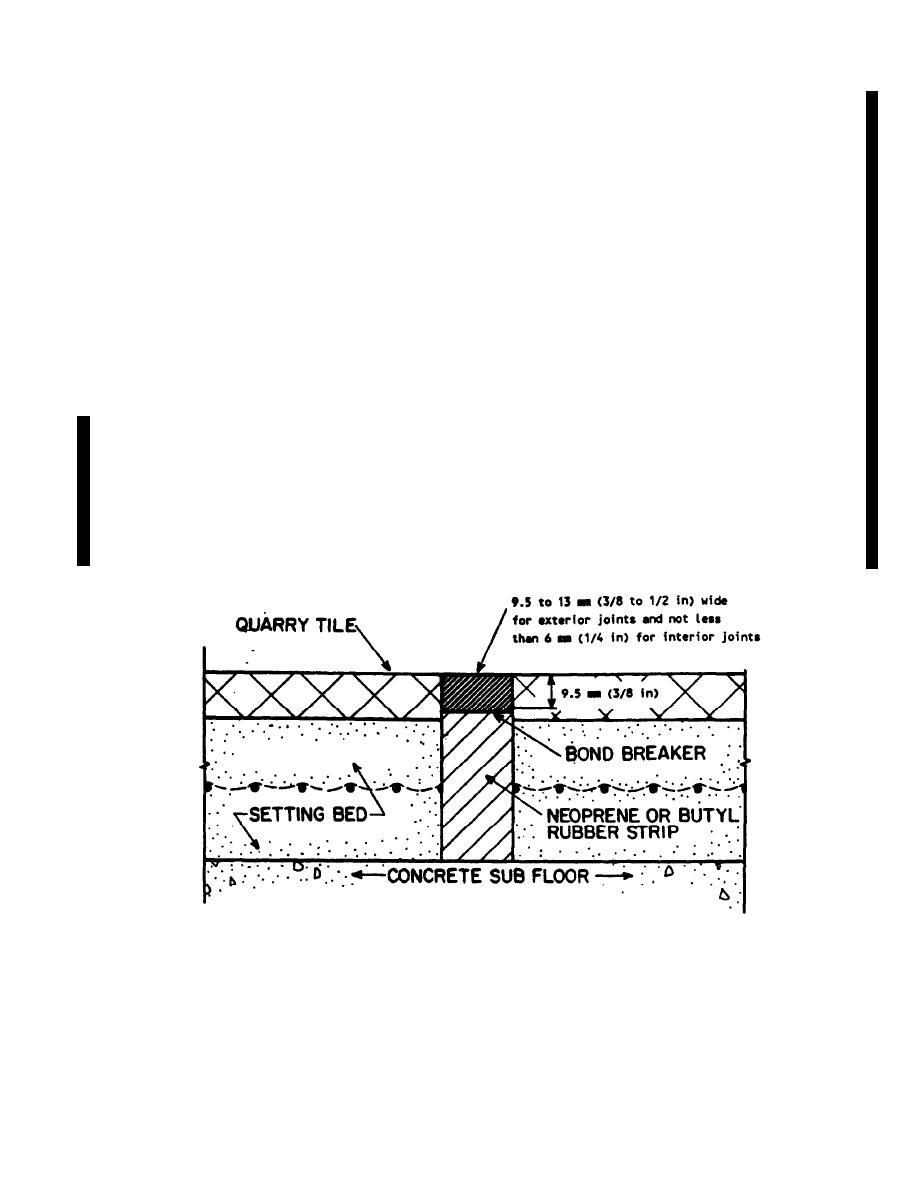
TM5-805-6
move independently of each other. Stationary
vibration from operating components connected to
the pipe or duct. In fire resistant structures, the
joints can be configured as shown in figures 4 and
gap must be filled with fireproofing material and a
5, except that a bond-breaker is not needed be-
sealant may be required to protect the fireproofing
cause there will be no deformation of the sealant
from traffic or water.
(or caulking). In a stationary joint, the backing
(1) Bare Pipe Sleeve. A bare pipe may pene-
may be rigid material.
trate a wall through a sleeve with sealant in the
b. Moving joints. Joints that move are generally
exterior wall and an escutcheon on the interior as
configured as shown in figures 4 or 5, and in every
shown in figure 10.
case the bottom of a moving joint should be
(2) Above Grade Insulated Pipe. Pipe insula-
protected by a bond-breaker or by a backing
tion should be protected by a metal jacket which
material which can move with the- sealant.
may be sealed to the sleeve as shown in figure 11.
c. Expansion and control joints. Expansion and
(3) Exterior Wall Penetration. Protection from
control joints should be treated as moving joints,
exterior moisture may be required above or below
including those control joints that do not penetrate
grade. The penetration may be isolated from the
the material but provide a weak place where a
waterproofing membrane by a clamping flange
crack can develop in the material beneath the
which also serves to protect the sealant as shown
joint. A control or expansion joint in tile is shown
in figure 9.
in figure 12.
(4) Floor Penetration. Sealant around a pipe
d. Pipe and round duct penetrations. A pipe or
penetrating through a floor should be sloped to
round duct must be protected with a sleeve when
avoid trapping water or dirt at the pipe to sealant
penetrating a floor, wall, ceiling or roof. The gap
interface as shown in figure 13.
between pipe and sleeve should be a minimum of 6
e. Typical joints. Table 2 lists typical joints used
mm ( inch) and the gap between duct and sleeve
in construction and provides sealant selection cri-
should be 25 mm (1 inch) or more. Sealants for
teria depending on the anticipated requirements
these g a p s may be selected from table 2. A
for movement, cure time, paint acceptance, and
resilient sealant may be required to absorb move-
resistance to traffic or standing water.
I ment due to thermal expansion or to dampen
Figure 9. Control or Expansion Joint in Tile.
13



 Previous Page
Previous Page
